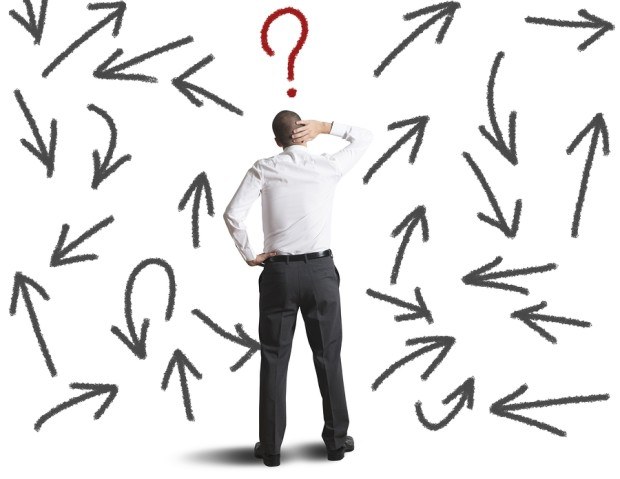It’s axiomatic to assert that the coronavirus has changed everything both personally and professionally.
Executive Summary
Property/casualty loss reserves have already turned slightly deficient, analysts from Assured Research revealed in a March report. In an upcoming April Assured Briefing, Assured Research President William Wilt and Managing Director Alan Zimmermann investigate how impacts of the coronavirus will complicate the loss reserve picture further—with the data entered into loss development triangles creating an indecipherable mess for actuaries to interpret to estimate reserve positions. They also discuss the potential for new types of claims and the likely impact on social inflation.This preview of the April Assured Briefing is being published with the permission of the authors. Other topics in the April Briefing are: Personal and Commercial Auto: The Only Good to Come of COVID-19; Tort Reform Led to the End of Social Inflation in the 1980s
For more research, visit http://bit.ly/2HhrrQq
Going forward, it’ll be our aim at Assured Research to strike a balance. No one, of course, can ignore the dramatic impact COVID-19 will have on our economy and the property/casualty industry. But at the same time, we think there is value (and yes, some comfort) to pursing non-COVID work, much of it dictated by familiar rhythms like annual statement reporting, the spring storm or hurricane seasons, or quarterly earnings reports. We’re going to try and maintain some balance in our research notes during the months ahead.
As for now, it’s too early, in our view, to start estimating, well, anything really. What costs or benefits (as from lower claims) or longer-term business opportunities might arise as a result of this pandemic? We’re still trying to figure out which businesses are open, which neighbors might have barber-quality shears to borrow, or who among the elderly in our neighborhoods have local relatives or some other support network on which they can rely.
The time for informed speculation will come—maybe after the inflection point in new cases and hospitalizations seems to have passed. By that point, we’ll have better epidemiological data, better economic data, maybe some clearer insight into fiscal and financial policies and their efficacy, and even some pre-first-quarter 2020 P/C claims data. Remember, Progressive reports its results on a monthly basis and on Wednesday, April 15, it’ll report results for the month of March—a good bit of which will have been lived under lockdown provisions in many states.
No, we don’t want to speculate too soon, but if readers will grant us this one indulgence, we will offer one prediction about which we feel quite strongly: The 2020 diagonal of virtually every actuarial loss development triangle in America will be an undecipherable mess!
We suppose there are a few lines of insurance that won’t be affected by the coronavirus, but without some help from readers we’re hard-pressed to name them. P/C insurance is, after all, a social construct predicated on the predictability of social behaviors and patterns, all of which are impacted by the coronavirus and our society’s necessary response to limit its destruction: shelter in place orders, lockdowns and social distancing mandates.Disrupted Diagonals
Actuaries will have their hands full trying to interpret the diagonal of loss development triangles when they are formed for accident- and calendar-year 2020—most particularly at June 30 and Dec. 31 this year. That will translate into more reserving risk, higher capital requirements and heightened pricing risk.
Consider the reality of the world in which we are now living and its possible impact on new and existing (i.e., open) claims:
• The court system has come to a near standstill, and all liability claims will be impacted. Can discovery move forward or depositions be taken? Will frivolous claims diminish as people focus on immediate issues of employment and food/health, or maybe courts will apply stricter viability standards once they can restart to thin their backlog?
And then there is the actuarial adage: The average severity of unpaid claims increases with age of development. In other words, high stakes, serious and complex litigation is unlikely to become easier or less expensive to resolve as court dates are pushed back by weeks or months.
• Will open case reserves on bodily injury claims, sitting in the diagonals of actuarial triangles, reflect fulsome and current medical information? Experts with whom we’ve spoken think the data flow and communications between the P/C industry and the healthcare system can continue uninterrupted, or mostly so. We hope they are right, but our small window of insight into the medical world suggests that virtually every available medical resource has been redirected to deal with the COVID-19 onslaught. We know elective surgeries have been postponed, but so too have all manner of non-urgent medical care (think physical therapy visits) and follow-up appointments.
Lengthening Tails
A longtime industry colleague and claims professional painted this scenario for us: In a pre-COVID-19 world, a worker unlucky enough to tear his labrum at work in mid-March could have it diagnosed and surgery scheduled by, say, the end of the month. Physical therapy visits would commence in April, perhaps modified return-to-work duties shortly thereafter, and by mid-to-later summer the claimant could be back at work in his old job. The cost of that claim is $X.
Contrast that normal claim pattern, repeated thousands of times in actuarial triangles, with that of the same worker now unlucky enough to tear his labrum in the middle of this March. No long description necessary here. He is sitting at home unable to schedule his surgery or even secure interim PT appointments. Maybe his claim worsens while he waits to have surgery in…the middle of the summer?
There are no modified duties to be undertaken while he waits—the economy has suffered a heart attack—and who knows what job will be available later this year (or next) once he has successfully battled all of the others like him who also pushed back their surgeries and PT appointments. The cost of that claim could be $2X or greater.
New Claims, or Lack Thereof
We try to be optimists, but since that rarely pays off for P/C analysts, we can admit that “going to the dark side is easy.” With regard to new types of claims that could be lurking in the diagonals of newly constructed 2020 triangles, consider that:
- Business interruption claims will be litigated all over the country.
- The compensability of COVID-related workers compensation claims will also be litigated and depend on guidance from regulators or administrative boards, some of which will only be one step removed from meaningful political influence.
- With millions of Americans newly WAH (you’ll know the abbreviation if it’s you), cybercrimes could proliferate.
- And thinking of the millions now WAH, what new homeowners claims will materialize?
- Civil commotion or even riots—the allied lines perils? Now we are going to the dark side.
There’s good news too. We have analyzed data from past recessions showing that personal and commercial auto claims are highly likely to decline not only because of lower vehicle miles traveled but also because accident rates decline during economic downturns. In other words, we both drive less and are safer when we do drive.
It is also reasonable, we think, to wonder whether the coronavirus will have a chilling effect on social inflation. Insofar as third-party litigation financiers could be negatively impacted by the decline in value and incredible rise in volatility in the capital markets, that might stem the flow of money into plaintiff firms and legal advertising. But then, too, having millions of newly unemployed Americans at home and, understandably, angry at what’s transpired—that can’t be good. (Related article, “It’s Not Over: Social Inflation Will Be Around for Some Time,” describes the impact of social inflation prior to the coronavirus outbreak.)
Straying farther afield, we have to wonder whether the global effort to social distance will offer important data points to scientists looking to understand the relationship between our carbon-dependent economy and climate change. Maybe, hopefully, the period of extreme social distancing will be too short to provide a useful data point, but it would be nice if some long-lasting good came from all of this.
Disrupted diagonals, lengthening tails and new claims. We expect the practice of loss reserving will be a lot more art and less science in the quarters ahead.
And did we need to mention that heightened loss reserving risk translates into more pricing risk? The hits just keep coming.





















 California Workers Comp Combined Ratio for 2024 Highest in 20-Plus Years
California Workers Comp Combined Ratio for 2024 Highest in 20-Plus Years  Rebuilding Negotiation Talent: Why This Skill Is Missing and How to Fix It
Rebuilding Negotiation Talent: Why This Skill Is Missing and How to Fix It  Carrier Management’s 2025 Top Features (Reader’s Picks Unlocked)
Carrier Management’s 2025 Top Features (Reader’s Picks Unlocked)  Breaking: Andersen to Replace Zaffino as CEO of AIG on June 1
Breaking: Andersen to Replace Zaffino as CEO of AIG on June 1 





